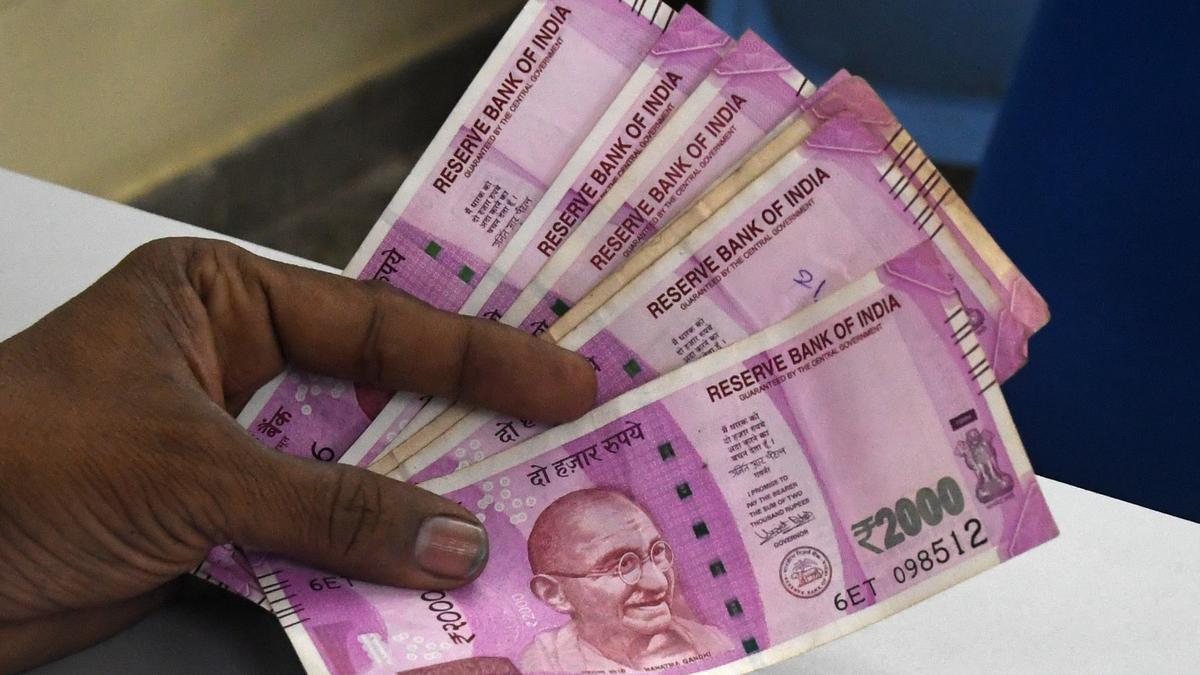
Rupee falls 5 paise to close at 82.02 against U.S. dollar
The Hindu
On Thursday, the rupee settled at 81.97 against the dollar.
The rupee depreciated by 5 paise to close at 82.02 (provisional) against the U.S. dollar on Friday amid strong American currency against major rivals overseas and negative sentiment in equity markets.
Outflow of foreign funds from domestic equities also put pressure on the local unit. However, a sharp fall in crude price cushioned the fall in the Indian currency, said analysts.
"FII outflows also weighed on the domestic currency while the overnight decline in crude oil prices cushioned the downside. The dollar strengthened overnight on hawkish comments by U.S. Federal Reserve Chair Jerome Powell," said Anuj Choudhary, Research Analyst at Sharekhan by BNP Paribas.
At the interbank foreign exchange, the domestic currency opened weak at 82.05 against the greenback. The unit hit the intra-day peak of 82.00 and the lowest level of 82.07 during the day's trade. The currency finally settled at 82.02 (provisional) against the U.S. dollar, registering a fall of 5 paise over the previous close.
On Thursday, the rupee settled at 81.97 against the dollar.
Mr. Chaudhary said the Indian currency is likely to see more fluctuation in the near term as participants may remain cautious awaiting PMI data from the U.S.
"Strong dollar and concerns over global growth may further pressurise rupee. Most global central banks have hiked interest rates, implying inflation is still a global issue. However, a weakness in crude oil prices may support rupee at lower levels. Traders may remain cautious ahead of PMI U.S. We expect the USDINR spot to trade between 81.50 to 82.40 in the near term," he added.

The Union Budget unveiled on February 1, 2025, has come at a time of unprecedented global uncertainty and a flagging domestic economy. The real GDP growth is estimated at 6.4% for 2024-25 and between 6.3-6.8% for 2025-26, a far cry from >8 percent growth required annually to make India a developed nation by 2047. While much attention has been devoted to the demand stimulus through income tax cuts, not enough is said about the proposed reforms in urban development, tariff rationalisation, and regulatory simplification aimed at making Indian cities and corporates more competitive. Since the majority of economic activity is located in cities (urban areas account for ~55% of GDP) and produced by large corporates (~40% of the national output and 55% of India’s exports), the above-mentioned reforms have a pivotal role in improving India’s trend growth rate. Below we unpack each reform.












